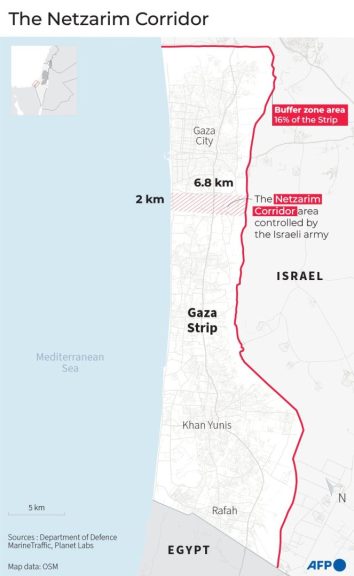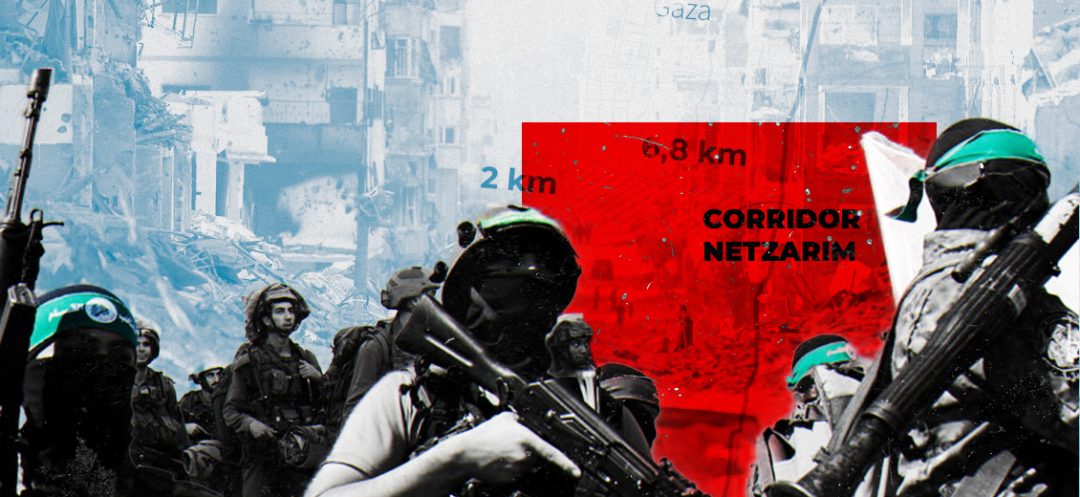Listen to the article
The issue of checkpoints in the Gaza Strip is a central point in the ceasefire talks held on August 15 in Doha. The Netzarim corridor is one of the contested routes. This is Beirut provides an overview of this area, which divides the enclave in two and has been recently developed by Israel.
The final phase of ceasefire negotiations for Gaza, held on August 15 in Doha, stumbled over discussions about the checkpoints in the enclave. The primary focus was on the Philadelphi and Netzarim corridors.
The US proposal includes a reduction of the Israeli military presence in the Philadelphi corridor, which is located between Gaza and Egypt. Meanwhile, Israel would continue to oversee the Netzarim corridor, which divides Gaza into the northern and southern sectors. The details of this part of the agreement have yet to be clarified.
What is the Netzarim Corridor?
Nearly four months after the start of the Gaza war on October 7, 2023, Israel embarked on a large-scale construction project: the development of a militarized corridor that crosses the Palestinian enclave from east to west, dividing the territory into northern and southern sections. Construction began last February.
The Netzarim corridor connects southern Israel (the Nahal Oz region) to the Mediterranean Sea on the eastern coast of the enclave, effectively isolating the northern city of Gaza from the rest of the Strip.
It is a nearly two-kilometer-wide corridor, accompanied by a 6.8-kilometer road that can be crossed in seven minutes.

Objectives and Stakes
For Israel, the Netzarim corridor serves multiple military and strategic interests centered around a key goal: consolidating security control over Gaza.
On one hand, it enables the monitoring of the area and facilitates raids. The Israeli army has built three advanced operation bases there, which have allowed for dozens of targeted raids in northern and central Gaza.
On the other hand, the installation of checkpoints along the corridor helps regulate the movement of Gazans toward the north of the enclave, coordinate the delivery of humanitarian aid to northern Gaza, and control traffic on the strategic roads, which are central to negotiations with Hamas.
In recent months, the Israeli Nahal brigade has operated primarily in the Netzarim corridor. By the end of April, it had been withdrawn from Gaza in preparation for future operations, including a potential ground incursion into Rafah. In the meantime, two reserve brigades have replaced it in the corridor.
Major Projects
To establish the Netzarim corridor, massive demolition works have been carried out by the Israeli army. Numerous buildings and homes were razed to make way for a buffer zone stretching one kilometer on either side of the corridor’s central road. Among the destroyed structures are the Turkish hospital, the Al-Aqsa University campus, and the entire villages of Moughraqa and Johr el-Dik, located east of Gaza.
As this military project progresses, the Israeli army is also working to expand the zone declared off-limits to Palestinians along the Gaza border, aiming to create a one-kilometer-wide buffer zone. As part of this effort, all buildings within this perimeter are being demolished. Once completed, this area would constitute about 16% of the total area of the Gaza Strip.
In this context, Volker Türk, the UN High Commissioner for Human Rights, warned on February 8 that Israel’s massive destruction of civilian infrastructure near the Gaza border constitutes a “serious violation” of the 1949 Geneva Convention on the protection of civilians during wartime, potentially even a war crime.
The corridor also crosses the former lands of the Netzarim settlement, established south of Gaza in 1972 and home to 400 residents. The settlement was evacuated in 2005 as part of an Israeli withdrawal plan from Palestinian lands, approved at the time by the government of Ariel Sharon. This was the first time since Israel began occupying the West Bank and Gaza Strip in 1967 that such a withdrawal had occurred.
Between July and August 2005, 21 settlements were dismantled in Gaza and four in the West Bank, resulting in the evacuation of over 8,000 Jewish residents from Gaza and around 300 from the northern West Bank.
Given these historical factors, the two infrastructure projects—the control corridor and the buffer zone—raise questions about potential preparations for a long-term Israeli presence in the post-war phase. Could this signal the recolonization of Gaza, or is it simply a military presence? These two options must certainly be considered in the negotiations for a permanent ceasefire in Gaza and lasting peace in the region.





